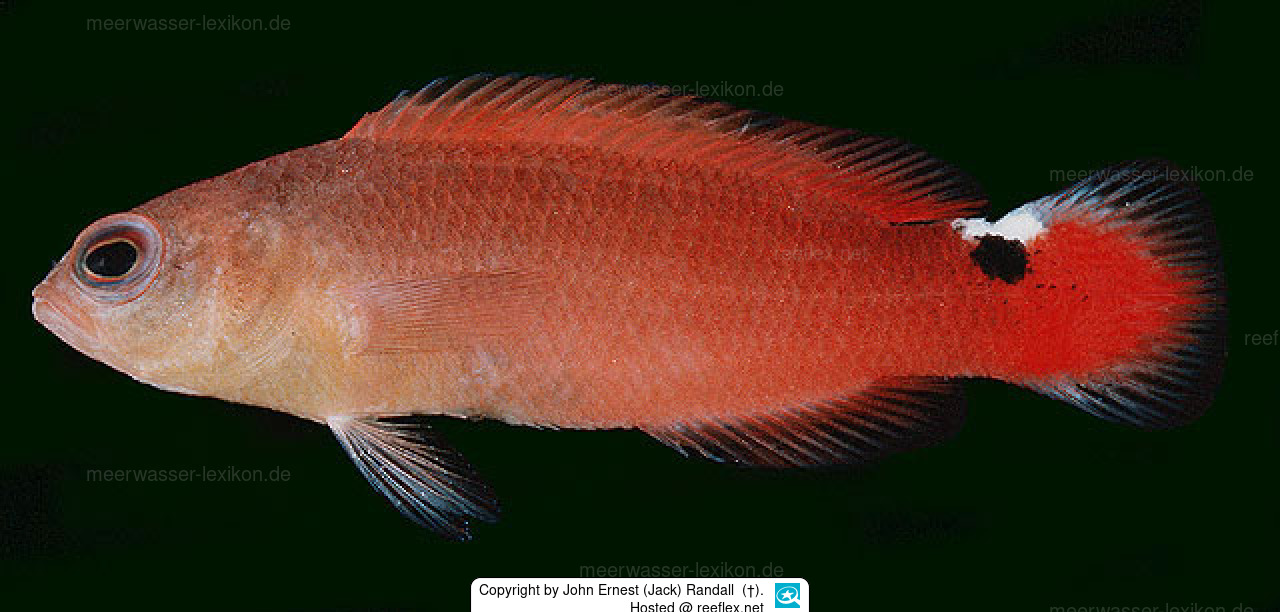Info
Pseudochromis jamesi, Schultz, 1943
Occurs inshore. Found on reef flats and on lagoon reefs
Can be kept as pair or in a group. Needs a lot of hiding places. Has been bread in captivety.
Males are reddish with with a black spot below a white spot on the upper pat of the caudal peduncle. Females are pale brownish to purplish with a similar spot.
Main reference:
Paxton, J.R., D.F. Hoese, G.R. Allen and J.E. Hanley, 1989. Pisces. Petromyzontidae to Carangidae. Zoological Catalogue of Australia, Vol. 7. Australian Government Publishing Service, Canberra, 665 p.
Occurs inshore. Found on reef flats and on lagoon reefs
Can be kept as pair or in a group. Needs a lot of hiding places. Has been bread in captivety.
Males are reddish with with a black spot below a white spot on the upper pat of the caudal peduncle. Females are pale brownish to purplish with a similar spot.
Main reference:
Paxton, J.R., D.F. Hoese, G.R. Allen and J.E. Hanley, 1989. Pisces. Petromyzontidae to Carangidae. Zoological Catalogue of Australia, Vol. 7. Australian Government Publishing Service, Canberra, 665 p.







 Dr. John Ernest (Jack) Randall (†), Hawaii
Dr. John Ernest (Jack) Randall (†), Hawaii



























































